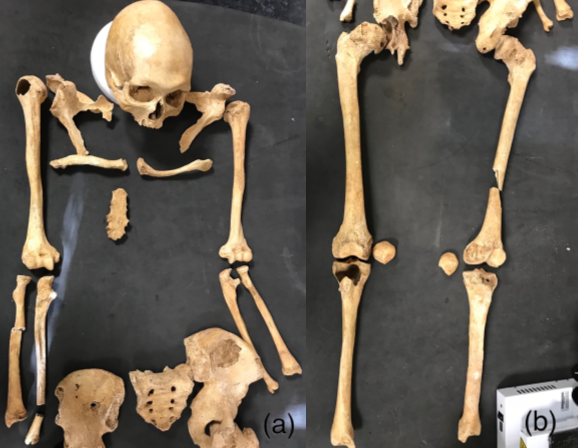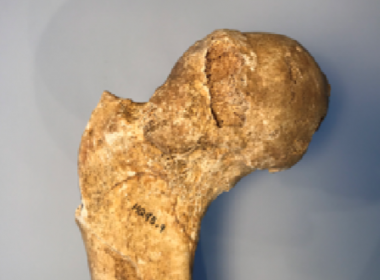Specimen background
This specimen, labeled HQ9, was discovered in the excavation site of Huntsman’s Quarry, 2.5km north of the village of Naunton, Gloucestershire. The skeleton was found buried in a stone-lined grave part of what used to be a cemetery of a Romano-British farmstead in the area. It was excavated in 1994-1995 and has been dated to around the 2nd or 3rd century AD. The subject, shown in the figure below, is a male and was aged about 35-45 at the time of death.

The right tibia shows reactive periosteal bone in the distal portion, which suggests that some local trauma occurred. It is also known that the subject was suffering from sub-clinical diffuse idiopathic skeletal hyperostosis (DISH) on his lower spine.
The femur
Although most of the bones were found intact, only the right femur was used for the scanning analysis. The left femur was not an option as it has a post mortem fracture in the centre of the shaft. The figures below show the two ends of the femur in more detail.


One of the femur’s most prominent features is the cavity in the lower femoral neck near where the greater trochanter should be located. The femur has various sections where the porous surface of the cancellous bone is visible.